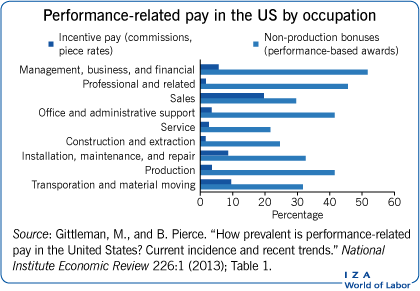Elevator pitch
To align employees’ interests with the firm’s goals, employers often use performance-based pay, but designing such a compensation plan is challenging because performance is typically multifaceted. For example, a sales employee should be incentivized to sell the company’s product, but a focus on current sales without rewarding the salespeople according to the quality of the product and/or customer service may result in fewer future sales. To solve this problem, firms often increase the number of metrics by which they evaluate their employees, but complex compensation plans may be difficult for employees to understand.

Key findings
Pros
Performance-based pay can increase productivity.
In response to additional performance metrics employees adjust their behavior because they are no longer incentivized to focus on only a few measurable and rewarded tasks.
Nonlinear incentive plans attract highly motivated employees.
With nonlinear incentive plans, less productive employees are motivated to match the productivity levels of their more productive peers.
Experienced staff will be more likely to understand how to respond to multiple performance metrics.
Cons
In the absence of a broad range of metrics, employees will only focus on those tasks that are rewarded at the expense of other tasks that may also be important to the firm.
Employees can attempt to “game” the system in pursuit of rewards, which can be costly to the firm.
Adding more performance metrics may make the reward system too complicated for employees to understand.
When subjective performance evaluations are used to reward hard-to-measure tasks, the firm is likely to incur significant costs managing this process.
When multiple performance metrics are used, firms incur costs in the process of determining the appropriate weight for each metric.